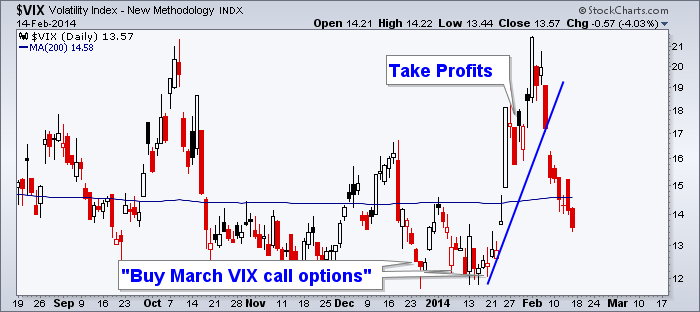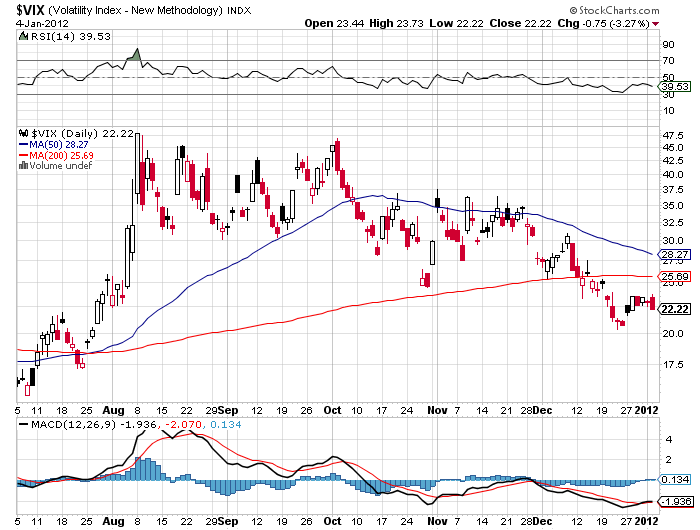Fear Index What Is The VIX and How Can You Trade Stock Market Volatility (NYSEARCA VXX NYSEARCA
Post on: 30 Май, 2015 No Comment

Have you ever wondered how billionaires continue to get RICHER, while the rest of the world is struggling?
I study billionaires for a living. To be more specific, I study how these investors generate such huge and consistent profits in the stock markets — year-in and year-out.
CLICK HERE to get your Free E-Book, “The Little Black Book Of Billionaires Secrets”
To calculate the VIX, the options that are used are either in the nearest month to expiration (known as the “front month”) or in the second month. This is done because the VIX is used to estimate the implied volatility that an S&P 500 at-the-money option would have with 30 days remaining until its expiration.
The VIX index is a number that is between 0 and 100, though it is often at the lower end of that range. The number itself represents the anticipated percentage movement in both directions of the S&P 500 Index over the following 30 days. For example, if the S&P 500 was at 1400 and the VIX had a reading of 20, the S&P 500 Index would be expected to move within a range of 1.67% (calculated by taking the 20 from the VIX indicator and dividing it by 12 months) over the next 30 days. This means that the S&P 500 would be expected to be within 1376.67 and 1423.33 (plus and minus 23.33, which is plus and minus 1.67% of 1400).
It’s important to keep in mind, however, that the VIX is constantly being updated due to the fact that stock prices are continuously changing, thus affecting the implied volatility that is inherent in the S&P 500′s nearest two months’ options premiums. As a result, the S&P 500 Index is not guaranteed to trade within that range predicted by the VIX at any given moment.
However, the VIX can give you an accurate assessment of the attitude of investors and traders regarding the current market and how they see it progressing it over the coming month. Those who are skilled at reading the VIX and assessing traders’ attitudes to anticipate how stock prices will react can use that information to help them make money from stocks and options.
If you wish to trade the volatility of the stock market, you have two ways of doing it. You can either buy volatility call and put options or you can purchase volatility exchange traded funds (ETFs). Volatility call and put options have their values determined by the price and movement that occurs on the CBOE’s Market Volatility Index (VIX). Volatility call and put options are recommended only for those who are advanced traders due to the fact that volatility options provide the purest way to take advantage of market volatility, shielding investors from other financial influences that can affect volatility ETFs.
Volatility ETFs have their values determined by the price and movement of volatility options that are connected to the movement of the VIX. There are both long-oriented and short-oriented volatility ETFs. Long-oriented ETFs should be bought when volatility is low (i.e. when the VIX is less than 20) so that investors can profit from spikes in volatility. Short-oriented ETFs should be bought when volatility is high (i.e. when the VIX is greater than 40) so that investors can profit from substantial drops in volatility. Volatility ETFs are recommended for those investors who have average experience in trading.
It is important to note that the VIX doesn’t just reflect how much volatility is in the S&P 500 Index; the VIX also indicates how much money options traders are paying for options contracts to protect their investments from downturns in the market.
With both volatility options and volatility ETFs, the key to profiting from them is to time the volatility trade based upon the type of option or ETF you have. When the VIX is under 20, you should consider purchasing long-orientated volatility options and ETFs in anticipation of a sudden rise in the VIX and a corresponding increase in the associated long volatility options and ETFs. When the VIX is above 40, usually due to an extreme selloff or panic, you should consider purchasing short-orientated volatility options and ETFs in anticipation of a sudden drop in the VIX and a corresponding increase in the associated short volatility options and ETFs.
In addition to ETFs for the VIX, there are ETNs for the VIX as well. Whereas ETFs are “Exchange-Traded Funds,” ETNs are “Exchange-Traded Notes.” ETNs are similar to bonds in that they are unsecured debt securities. This means that if the issuer of the ETNs files for bankruptcy, the only course of action you’ll have to gain back your money is to stand in line along with the other unsecured creditors. This is contrary to ETFs, which are set up as independent legal entities. This allows them to just hire a new manager if the issuer of the ETF declares bankruptcy. As a result, ETNs are riskier than ETFs.
One other important distinction between ETFs and ETNs is the following in relation to the VIX index: ETFs are based on the VIX itself, whereas ETNs are based on VIX futures, which usually act quite differently from the VIX itself.
Some of the most well-known volatility ETNs include the iPath S&P 500 VIX Short-Term Futures ETN (NYSEARCA:VXX ), the Daily Inverse VIX Short-Term ETN (NYSEARCA:XIV ), and the Velocity Shares Daily 2x VIX Short Term ETN (NYSEARCA:TVIX ). The NYSEARCA:VXX ETN is an unsecured debt security that is issued by Barclays Bank PLC and is designed to track the S&P 500 VIX Short-Term Futures™ Index TR. This ETN provides exposure to a daily rolling long position in VIX future contracts’ first and second months, which depends upon the implied volatility of the S&P 500 Index as it moves along the forward volatility curve. Two additional VIX ETNs, the iPath S&P 500 VIX Mid-Term Futures ETN (NYSEARCA:VXZ ) and the S&P 500 Dynamic VIX ETN (NYSEARCA:XVZ ), also offer exposure to the VIX via a combination of futures contracts.
The NYSEARCA:XIV ETN tracks the S&P 500 VIX Short-Term Futures™ Index Excess Return and reflects the returns that can be earned via an unsecured debt security in short-term futures contracts, which are measured via the VIX.
The NYSEARCA:TVIX ETN is the Velocity Shares Daily 2x VIX Short Term and is a financial investment that is purchased to trade volatility on the long side. This investment is designed to gain the returns of twice the daily performance of the S&P 500 VIX Short-Term Futures™ Index.
The NYSEARCA:VXZ ETN is priced from the average volatility of the 4 th through 7 th month futures contracts of the S&P 500 Index as traded on the CBOE, and is designed to trade volatility on the long side.
The NYSEARCA:XVZ is designed to track volatility in the markets as measured by the S&P 500 Dynamic VIX Futures Total Return Index. The S&P 500 Dynamic VIX Futures Total Return Index seeks to combine results of volatility of the S&P 500VIX Short-Term Futures Index Excess Return and the S&P 500 VIX Mid-Term Futures Index Excess Return to create an accurate market volatility reading, as measured by the CBOE.
The VIX Today:

The Volatility Index – New Metholodology (VIX Index) closed below the “20″ threshold today at 18.10. Typically a below “20″ number would indicate a long trend in markets and less “fear” among investors, so a buy signal would be appropriate. A buy signal would make sense as major markets closed in the green today.
By looking at the VIX chart below however, one can see a flat trend in the last few days, likely in response to the market correction and a potential sell off. Although today was “fearless,” tomorrow might be “fearful.” Also keep in mind that VIX ETFs and ETNs sometimes do not track correctly, so do not be surprised if markets soar and the VIX index soars with it, and vice versa:
Executive Summary:
The VIX is the Chicago Board Options Exchange (CBOE) Volatility Index, which shows the expected volatility of the market over the next 30 days. This is determined by the stock index option prices trading on the market, with this number constantly being revised due to the fact that prices continuously fluctuate throughout the trading period. A VIX under 20 would indicate that investors should purchase long-oriented ETFs that increase in value when the VIX sees a sudden spike in volatility, while a VIX over 40 would benefit those investors who purchase short-oriented ETFs that increase in value when there are sudden drops in volatility.
In addition to ETFs, investors can also purchase ETNs, which are debt securities that are based on VIX futures. ETNs have notable differences from ETFs, leading to both disadvantages and advantages.
Bottom Line: Knowledgeable investors who are aware of how volatility on the stock market works can use that knowledge to buy the appropriate ETFs and ETNs based on current market conditions and profit from those investments. Although the VIX index read a below “20″ number today which indicates a “fearless” marketplace, I would be weary of a “long” trend in the near future.
Disclaimer: Wall Street Sector Selector actively trades a wide range of exchange traded funds (ETFs) and positions can change at any time.
John Nyaradi is Publisher of Wall Street Sector Selector and Senior Vice President of Private Client Services for ProfitScore Capital Management, Inc. Get a free Special Report from Wall Street Sector Selector .














